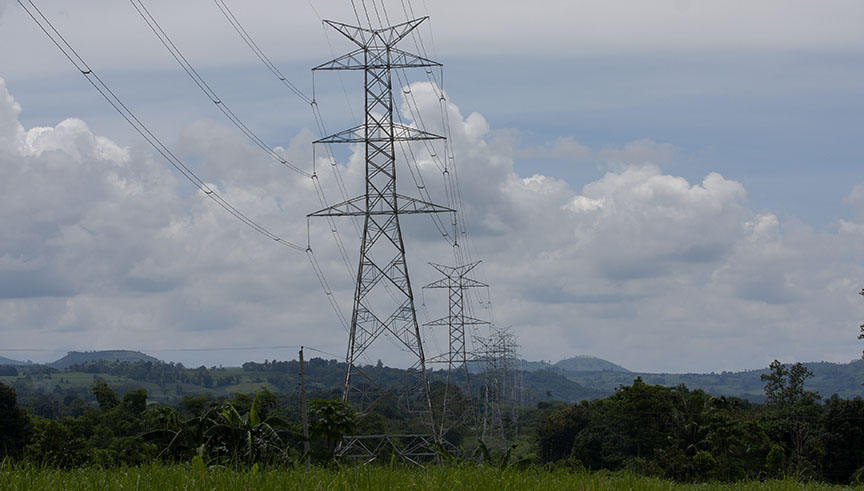
Upgrade to High-Speed Internet for only ₱1499/month!
Enjoy up to 100 Mbps fiber broadband, perfect for browsing, streaming, and gaming.
Visit Suniway.ph to learn
 NGCP transmission towers. MindaNews file photo by BOBBY TIMONERA
NGCP transmission towers. MindaNews file photo by BOBBY TIMONERA(MindaNews / 04 April) – The Mindanao grid will have more than enough power supply for the entire island this summer or until the second quarter of 2025, and can even export to the Visayas, an international climate and energy think tank said.
In the report titled “Philippine Power Outlook: Reviewing the Adequacy of Power Supply from April to June 2025” launched on April 3 in Quezon City, the Institute for Climate and Sustainable Cities (ICSC) assessed the country’s readiness to address the anticipated increase in demand in the upcoming hot and dry season.
This is the fourth annual release of the Power Outlook Report, which was launched in 2022. The reports have consistently shown that power supply issues in the second quarter of each year have been a recurring concern in the country.
The Luzon and Visayas grids are expected to experience scarcer power reserves in June this year, while the Mindanao grid is projected to maintain normal reserves this summer and is capable of exporting power as a larger supply is available, the report, co-authored by Jephraim Manansala and Charles Jason Diaz, said.
“With its existing and committed generation capacities, Mindanao can maintain sufficient reserve levels even while exporting 450 MW to Visayas. However, it can reduce exports if necessary to ensure sufficient reserves in its grid,” the ICSC said in a statement.
As of 1 p.m. Thursday, the Mindanao grid’s capacity stood at 3,221 megawatts (MW) with a system peak demand of 2,596 MW, or an excess of 625 MW, data from the National Grid Corp. of the Philippines (NGCP) showed.
Luzon’s available capacity was at 15,601 MW, demand of 12,523 MW and surplus of 3,078 MW, while Visayas had a supply of 2,811 MW and demand of 2,377, or an operating margin of 434 MW.
In January last year, the NGCP, the country’s sole transmission operator, began the commercial operation of the 450-MW Mindanao–Visayas Interconnection Project (MVIP), which would allow the former to export supply to the latter.
The ICSC said the Visayas grid can maintain normal reserves in the second quarter of 2025, but is completely dependent on imports from Luzon and Mindanao, which are mostly dependent on coal-fired power plants for baseload supply.
“Although elevated electricity demand during the summer contributes to power supply issues experienced in these months, forced outages of baseload power plants have constantly exacerbated the situation,” said Manansala, also ICSC’s chief data scientist.
Citing this year’s first yellow alert raised by the NGCP over the Luzon grid last March 5, ICSC noted that seven baseload coal-fired power plants were on outage that day, which resulted in a total of 2,495 MW of power being unavailable to the grid, further emphasizing the grid’s vulnerability. In addition, three coal plants were also operating on derated or reduced capacities on March 5.
“Power plant outages, especially unplanned ones, and plants running at a derated capacity, can severely disrupt the balance between supply and demand, significantly hindering the grid’s ability to meet the country’s growing energy needs — especially during peak demand hours,” Manansala added.
In the report, ICSC assessed the operating margins, or the difference between the available generating capacity and peak demand, in the country’s three main island grids based on the 2025 Weekly Demand, Supply, and Operating Margin Profile issued by the NGCP and the Department of Energy (DOE) in December 2024.
The findings showed that the Luzon grid will likely have normal reserves in April, with yellow alerts possible in May, and red alerts possible in June. The Luzon grid is projected to export power to the Visayas grid through the 250 MW high voltage direct current (HVDC) interconnection from March 31 to June 1 (Weeks 14-22 of 2025), to ensure sufficient reserves in Visayas. However, it will need to restrict exports in Week 23, particularly on June 2-8, as this is the tightest period for Luzon given the reduced coal generation of around 842 MW forecasted by the NGCP and DOE, potentially leading to red grid alert levels.
The Visayas grid, on the other hand, is expected to maintain normal reserves in the second quarter, but remains heavily dependent on imports from Luzon and Mindanao. In addition, yellow alerts are possible in June, as Luzon may restrict exports due to inadequate power supply in the said period.
The Mindanao grid is projected to have a significant power surplus in the second quarter of 2025 that it can export to the Visayas, the ICSC said.
The current power situation in Mindanao was starkly different over a decade ago when parts of the island suffered eight-hour rotating blackouts due to insufficient supply coming from government-run hydropower plants, blamed on low water supply due to the dry season then.
In 2013, 52% of Mindanao’s power supply came from state-owned hydropower plants, data then from the Mindanao Development Authority showed. (Bong S. Sarmiento / MindaNews)

.png) 2 months ago
15
2 months ago
15



